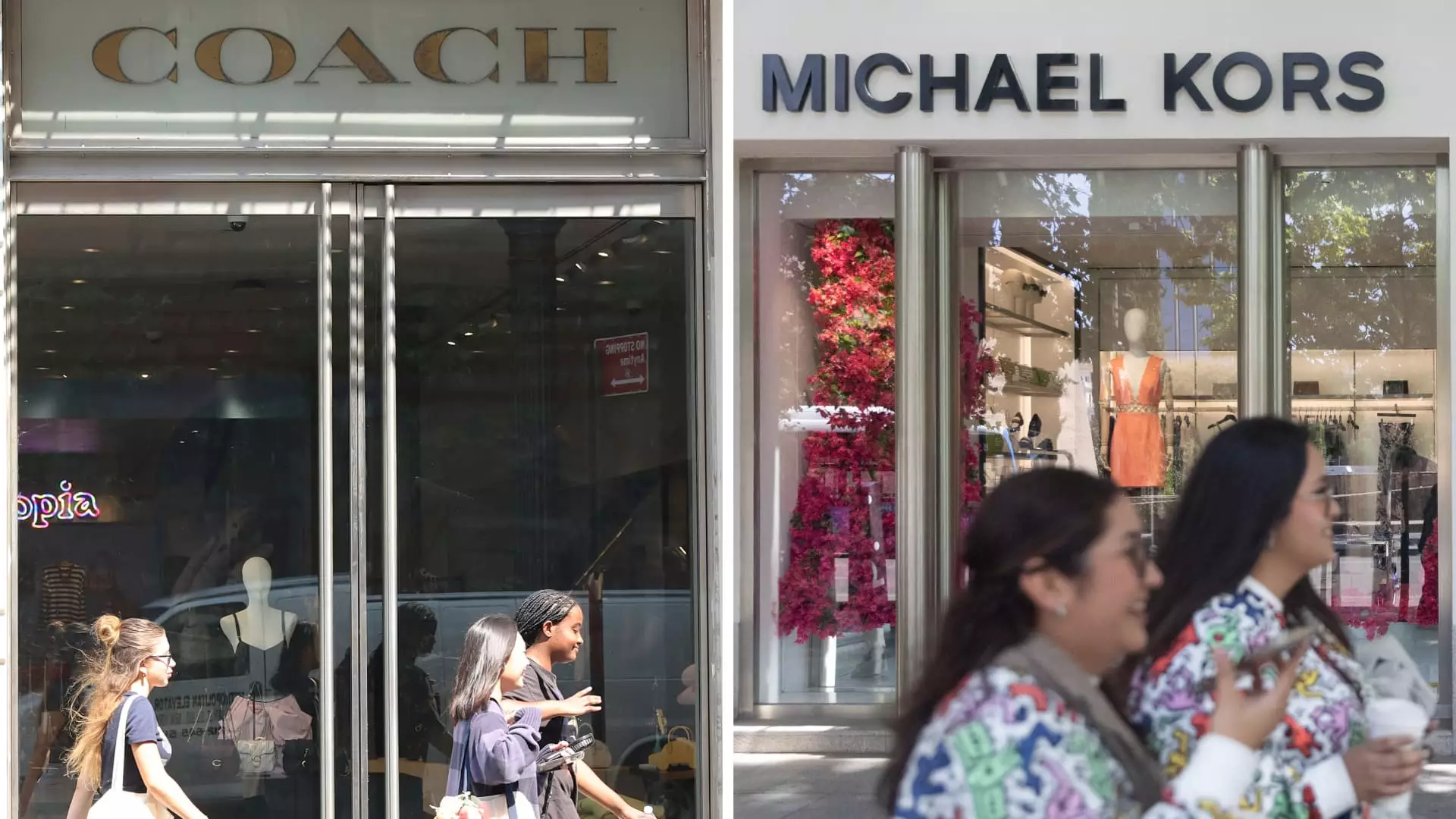On a significant day in the world of luxury fashion, Tapestry’s proposed acquisition of Capri Holdings was halted by federal intervention, marking a pivotal moment for both companies. Judge Jennifer Rochon ruled in favor of the Federal Trade Commission’s (FTC) request for a preliminary injunction, thereby impeding the merger that aimed to consolidate some of the most prestigious brands in the industry. This decision not only had immediate financial repercussions for both entities—Tapestry’s stock rose by 10%, while Capri’s plummeted by roughly 50%—but also set a precedent regarding how the federal regulatory body is willing to scrutinize and potentially obstruct corporate consolidation in competitive markets.
The planned $8.5 billion merger was intended to unify Tapestry’s portfolio, which includes recognized names such as Coach and Kate Spade, with Capri’s luxury options like Versace and Michael Kors. Both companies argued that merging would enhance competitiveness and innovation, better catering to evolving consumer demands. Tapestry claimed the merger would allow it to adapt to trends more efficiently and respond to consumer expectations with better products.
However, the FTC’s stance painted a starkly different picture. It articulated concerns that such a consolidation would stifle competition, particularly within the affordable handbag segment. The Commission positioned itself as a guardian of consumer interests, arguing that the merger would ultimately harm shoppers by reducing market access to reasonably priced luxury items. The FTC’s apprehensions underscored a growing regulatory effort under Chair Lina Khan to prevent what they perceive as anti-competitive behaviors across multiple industries, including fashion, groceries, and technology.
The legal aspects surrounding the merger deal are complex and fraught with financial implications. Tapestry has committed to compensating Capri for expenses associated with the merger attempt if it fails to gain the necessary approvals, with potential penalties amounting to between $30 million and $50 million for backing out of the agreement. Conversely, Capri faces the risk of incurring a hefty breakup fee of $240 million should it choose to withdraw from the deal.
The financial consequences are a reflection of the significant investments both companies have placed in this merger process. Nevertheless, the ultimate objective of the acquisition—to create a fashion powerhouse—has now been complicated by regulatory hurdles that signal a possible shift in how mergers are assessed in the luxury market.
The Broader Economic Context
This ruling takes place against a backdrop of rising consumer price sensitivity, driven by prolonged inflation which has altered buying patterns across many sectors. In an environment where consumers are increasingly conscious of price points, the FTC’s decision is celebrated by advocates who are keen to preserve competitive market dynamics. This case is resonating with public sentiment as it aligns with a broader political discourse on inflation control and economic fairness, where both the Democratic and Republican parties have vocalized criticism over rising costs.
The FTC’s assertion that the merger would lead to higher prices for consumers highlights a growing concern regarding corporate mergers—in this case, the potential for diminished competition leading to fewer choices and higher costs for everyday consumers.
As Tapestry prepares to appeal the ruling, it faces a complicated legal landscape. The initial jury opinion, sealed from the public eye, leaves room for speculation on the judge’s reasoning and potential avenues for legal recourse. Moreover, as litigation unfolds, the luxury fashion industry will be watching closely; the outcome could set a significant benchmark for future mergers in a sector that thrives on brand differentiation and competitive rivalry.
The incident illustrates the precarious balance between corporate growth ambitions and regulatory scrutiny, especially in high-stakes industries such as fashion. The court’s decision to block the merger underscores a broader commitment to maintaining market competition, reinforcing the idea that consumer interests will be prioritized to safeguard against oligopoly-like formations.
While Tapestry and Capri may have envisioned a united front pushing forward in the luxury market, for now, they must grapple with the implications of this ruling. The landscape of luxury fashion remains fragmented, paving the way for ongoing battles over market positioning and regulatory compliance.

